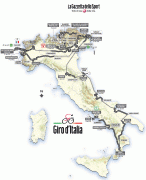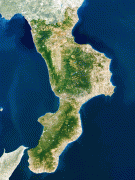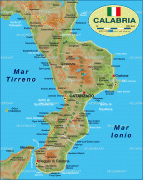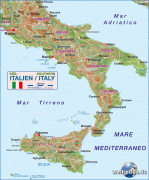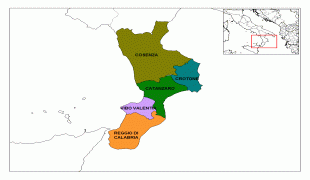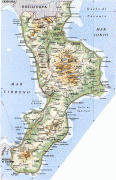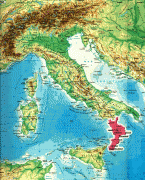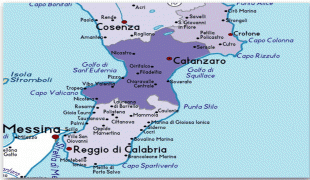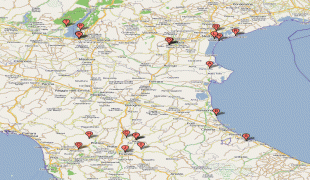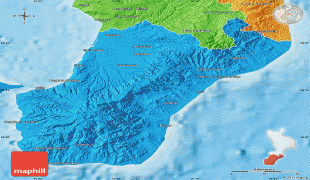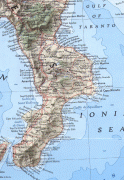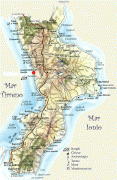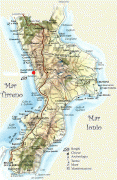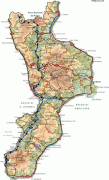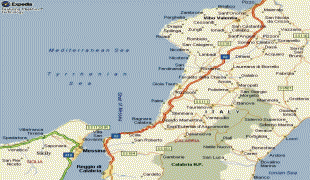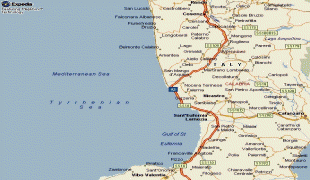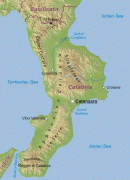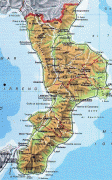Calabria
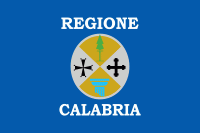 |
 |
Calabria is the birthplace of the term Italy, given to it by the Ancient Greeks which settled in this land starting from the 8th century BC. Thanks to its strategic position in the center of the Mediterranean Sea, the region became the center of Magna Grecia (Greater Greece), with the foundation along its coasts of many Greek city-states (póleis) that remained for centuries among the richest and most culturally advanced of their time. Calabria is where Pythagoras, one of the fathers of Western philosophy, developed and spread his thought. It's also the birthplace of Milo, the greatest champion of the ancient Olympic Games, and the adoptive homeland of Herodotus, one of the greatest historians of all time.
In Roman times it was part of the Regio III Lucania et Bruttii, a region of Augustan Italy. After the Gothic War, it became and remained for five centuries a Byzantine dominion (Duchy of Calabria, later promoted to Theme), fully recovering its Hellenic character on a linguistic, religious and artistic level. Cenobitism flourished, with the rise in the whole peninsula of countless churches, hermitages and monasteries in which multitudes of Basilian monks were dedicated to the transcription of classical and religious texts. The Byzantines introduced the art of silk in Calabria and made it the main silk production area in Europe. In the 11th century, the Norman conquest started a slow process of Latinization.
It is the birthplace of two of the most influential European philosophers of the 16th century, Bernardino Telesio and Tommaso Campanella. In Calabria there are three historical ethnic minorities: the Griko people, speaking Calabrian Greek (also known as Grecanico), a local variety of the Greek language with some unique and archaic features; the Arbëreshë people, descendants of Albanian refugees who fled Albania between the 14th and the 18th centuries following the Ottoman conquest of the Balkans; the Occitans of Guardia Piemontese, a village founded in the 12th century by Waldensians coming from the Western Alps. This extraordinary linguistic diversity makes the region an object of study for linguists from all over the world. Three national parks are found in Calabria: the Pollino National Park (which is the largest in the country), the Sila National Park and the Aspromonte National Park. This, combined with a large number of beaches, small villages, archaeological parks and ancient castles, makes the region a tourist destination.
Starting in the third century BC, the name Calabria was originally given to the Adriatic coast of the Salento peninsula in modern Apulia. In the late first century BC this name came to extend to the entirety of the Salento, when the Roman emperor Augustus divided Italy into regions. The whole region of Apulia received the name Regio II Apulia et Calabria. By this time modern Calabria was still known as Bruttium, after the Bruttians who inhabited the region. Later in the seventh century AD, the Byzantine Empire created the Duchy of Calabria from the Salento and the Ionian part of Bruttium. Even though the Calabrian part of the duchy was conquered by the Longobards during the eighth and ninth centuries AD, the Byzantines continued to use the name Calabria for their remaining territory in Bruttium.
The modern name Italy derives from Italia, which was first used as a name for the southern part of modern Calabria. Over time the Greeks started to use it for the rest of the southern Italian peninsula as well. After the Roman conquest of the region, the name was used for the entire Italian peninsula and eventually the Alpine region too.
Map - Calabria
Map
Country - Italy
 |
 |
| Flag of Italy | |
Italy was the native place of many civilizations such as the Italic peoples and the Etruscans, while due to its central geographic location in Southern Europe and the Mediterranean, the country has also historically been home to myriad peoples and cultures, who immigrated to the peninsula throughout history. The Latins, native of central Italy, formed the Roman Kingdom in the 8th century BC, which eventually became a republic with a government of the Senate and the People. The Roman Republic initially conquered and assimilated its neighbours on the Italian peninsula, eventually expanding and conquering a large part of Europe, North Africa and Western Asia. By the first century BC, the Roman Empire emerged as the dominant power in the Mediterranean Basin and became a leading cultural, political and religious centre, inaugurating the Pax Romana, a period of more than 200 years during which Italy's law, technology, economy, art, and literature developed.
Currency / Language
| ISO | Currency | Symbol | Significant figures |
|---|---|---|---|
| EUR | Euro | € | 2 |
| ISO | Language |
|---|---|
| CA | Catalan language |
| CO | Corsican language |
| FR | French language |
| DE | German language |
| IT | Italian language |
| SC | Sardinian language |
| SL | Slovene language |






